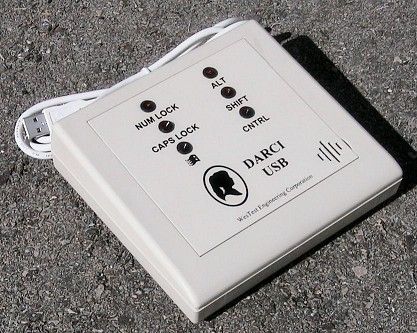
Darci USB is a versatile computer input device for users with a wide range of physical disabilities.
Here’s the irony: Computers offer people with disabilities access to many things in the world. However, their disabilities may impede their access to those very computers. That’s why input devices are so important. There are a number of switches, eye-gaze, and touch-screen technologies available. Sometimes, these work with software-based input AT. What sets Darci USB from WestTest apart is that she (the device was named after the granddaughter of one of the founders) works with all applications on the user’s computer, whether Mac or Windows. The user, therefore, can use Darci with any home, school, or work computer they use. This hub accommodates any of a variety of keyboards, mice, joysticks, switches, or buttons. Audio feedback within Darci informs the user of the input or status. What’s more, Darci can be customized to meet the user’s individual needs and capabilities.
Morse code… isn’t that a thing of the past? It may be “old school,” but Morse code remains the fastest and most productive access mode, which is true even of computers. The fact is that Morse code becomes intuitive and automatic, much like touch typing and playing the piano. According to WestTest, Morse code is underutilized because people think it is difficult to learn. It isn’t. For individuals who lack use of their fingers, Morse code-based input is a simple and highly effective method of alternative input. And that’s what accessibility, the foundation of assistive technology is all about.


